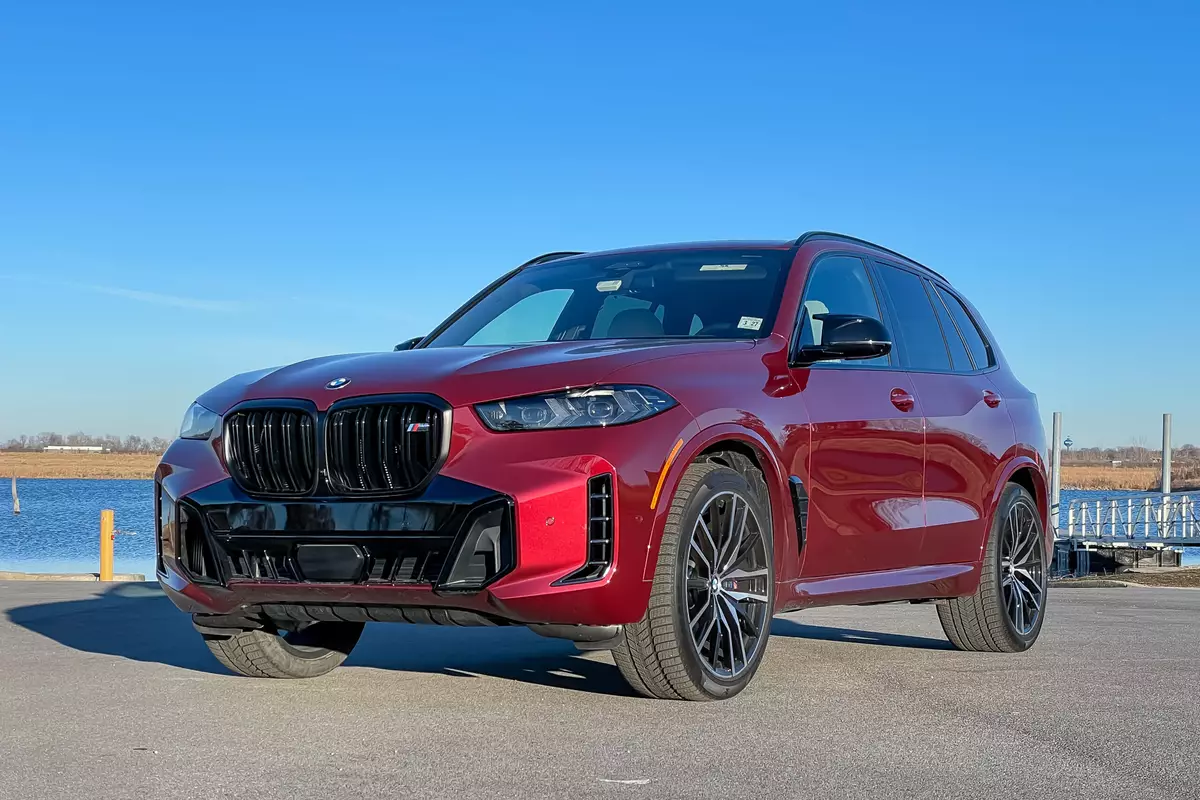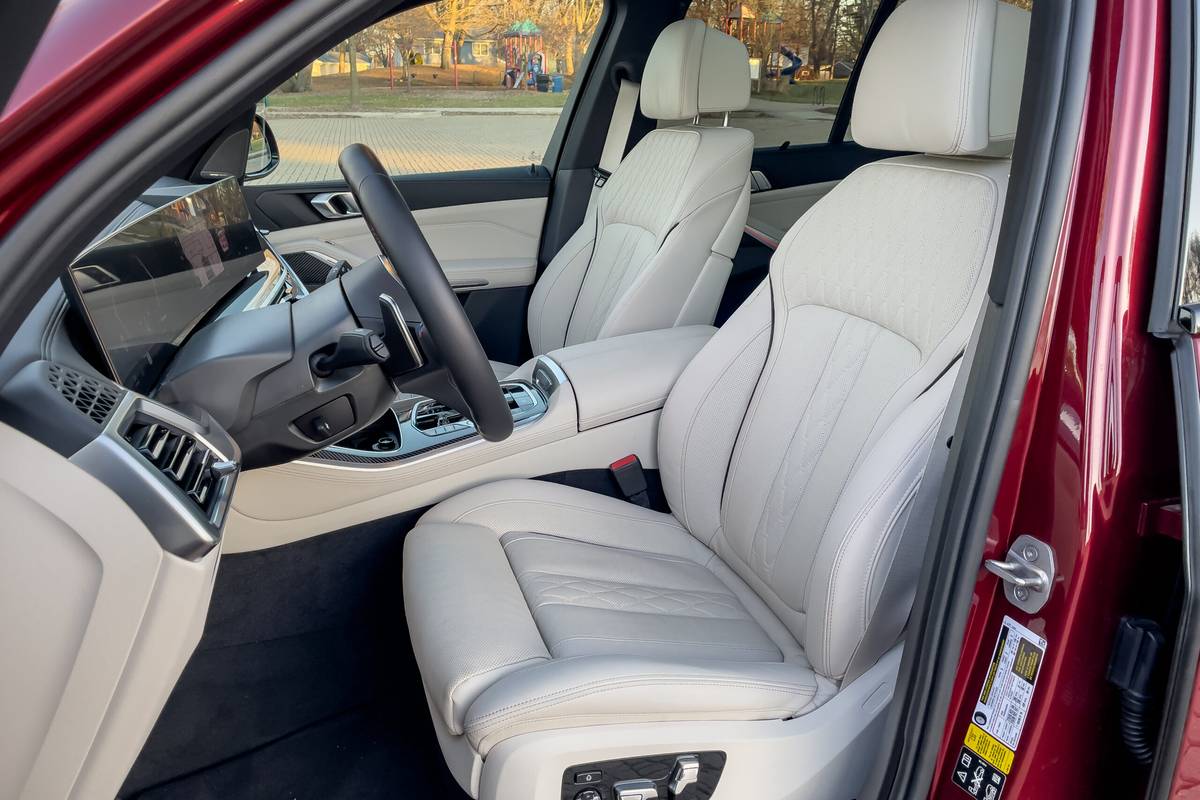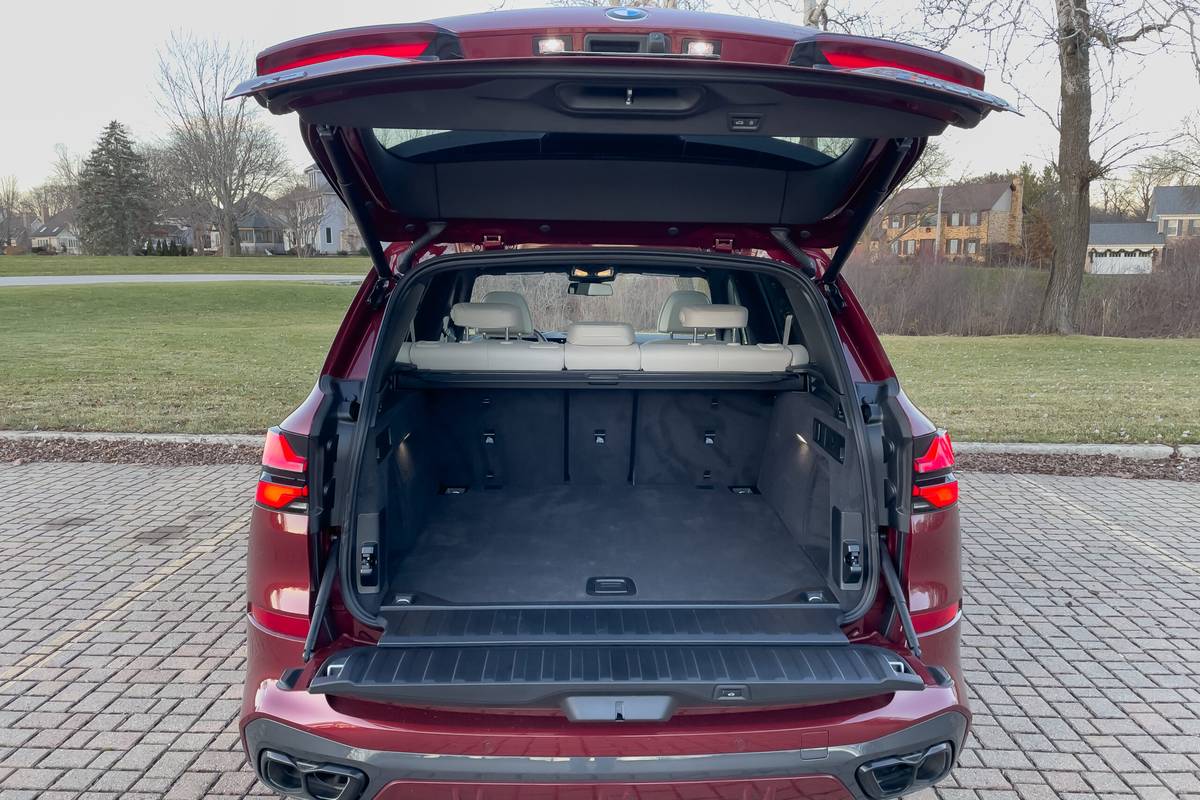Is the 2025 BMW X5 M60i a Good SUV? 4 Pros, 3 Cons

The BMW X5 M60i is one of the more performance-focused variants in the Bavarian automaker’s X5 mid-size luxury SUV lineup, with suspension and powertrain upgrades including a twin-turbocharged V-8 engine. Updated for 2024 along with the rest of the X5 lineup, changes include a new 48-volt mild-hybrid powertrain for increased efficiency, new tech features and updated styling.
- ${price_badge()}
- ${ami_badge()}
- ${battery_badge()}${ev_report_link()}
- ${hot_car_badge()}
- ${award_badge()}
- ${cpo_badge()}
${price_badge_description}
${ami_badge_description}
The EV Battery Rating is based on this vehicle's current expected range relative to the vehicles expected range when new. ${battery_badge_text}
This vehicle is certified pre-owned, backed by a manufacturer warranty, and typically undergoes a rigorous multi-point inspection to ensure quality and reliability.
This vehicle is currently in high demand given its competitive price, desirable features, and overall condition, and may have a higher chance of selling quickly.
Shop the 2025 BMW X5 near you


The new powertrain doesn’t make the M60i any faster, but it does enhance smoothness and efficiency. It does bring a modest increase in fuel economy, although that may not be a huge concern for anyone buying a roughly $100,000 SUV capable of accelerating from 0-60 mph in 4.2 seconds. The freshening also brings an updated interior with new displays, lighting options and added tech. X5s received standard front LED lighting and additional equipment in some option packages for 2025, but the model remains otherwise unchanged.
Cars.com Managing Editor Joe Bruzek spent a week getting to know a new X5 M60i and was impressed by its performance, impressive interior and updated tech. Not all was to his liking, however. Tap the link above for Bruzek’s expert review, or read on for a quick look at four things we like about the 2025 BMW X5 M60i and three we don’t.
Things We Like

1. Happy Hybrid
The biggest change with the update is a new twin-turbo V-8 engine with a 48-volt mild-hybrid system. Designed to bring added smoothness to the driving experience in addition to increased efficiency, the powertrain produces the same 523 horsepower as the outgoing, conventionally-powered M50. Response is immediate and seamless, making the M60 that much more entertaining to drive. Fuel economy, however, increases only by 1 mpg in combined city and highway driving.
2. Lively Performer
With its snappy responses and exotic-sounding exhaust, the M60 can feel and perform more like a sports sedan than a 5,355-pound SUV. The eight-speed automatic transmission is perfectly matched with the engine, delivering crisp and well-timed shifts with modes for sportier driving. While acceleration isn’t quite as quick as the old engine, its 4.2-second 0-60 time is only 0.1 second slower than the old engine.
3. Comfortable Ride
The M60i’s standard adaptive suspension delivers a remarkably comfortable and absorbent ride, even with the optional 22-inch wheels and winter tires on our test vehicle. That’s something that can’t be said of some competing performance-focused SUVs. Impacts are soaked up with ease and are heard more than felt. The cabin is quiet in motion, with little wind and road noise.
4. Interior Quality
Luxurious, modern and well put together, the cabin has a solid look and feel. Every control, surface and component appears to be well constructed with quality materials. The new digital displays are big, vivid and responsive, and the driver’s instrument panel was easy to understand despite being packed with information. The quality feel extends to the rear seat, where occupants are treated to just as much luxury as those up front.
More From Cars.com:
- What’s New for the 2025 BMW X5?
- 2024 BMW X5 Plug-In Hybrid EV Range: How Far Can It Go on Electricity Alone?
- How Do Car Seats Fit in a 2024 BMW X5?
- 2024 BMW X5, X6 M Competitions: Hybrid V-8 Promises Efficiency Boost
- Which SUVs Can Tow at Least 5,000 Pounds?
Things We Don’t Like

1. Digital Dominance
The high-resolution 12.3-inch digital instrument display and 14.9-inch horizontally-oriented infotainment touchscreen are quick to respond and impressive to look at. Unfortunately, the update removes the physical buttons for climate and audio functions, which have been replaced with digital controls that can be harder to use on the fly. Some functions like heated seats require diving deep into menus. Voice controls remain an alternative to avoid taking your eyes off the road.
2. Rear Seat Room
Rear-seat passengers don’t get shorted on amenities, but some might find they have less room all around than they might like. There’s not much more room in the back than in the automaker’s compact X3 SUV, which can also make installing child-safety seats a challenge. Access is made more challenging by rear doors that don’t open very wide. If you need more room, consider the larger three-row BMW X7.
3. Cargo Space
With 19.3 cubic feet of room behind the rear seat, the X5’s cargo capacity is on the small side for a mid-size two-row SUV. Others do considerably better, like the Genesis GV80 with its 23.5 cubic feet of space. The X5 also still uses a flip-down tailgate combined with a smaller liftgate instead of the more common one-piece top-hinged liftgate found with competitors. While the BMW setup can provide a handy seat for tailgating, the arrangement can be more of a hassle to use than a one-piece tailgate.
Related Video:
Cars.com’s Editorial department is your source for automotive news and reviews. In line with Cars.com’s long-standing ethics policy, editors and reviewers don’t accept gifts or free trips from automakers. The Editorial department is independent of Cars.com’s advertising, sales and sponsored content departments.
Featured stories



